MMA is one of the most exciting sports in the world. Two fighters enter the ring, and only one leaves victorious. It is a sport that requires equal parts skill and brutality, and there is no room for error.
MMA is also one of the most popular sports in the world, with fans tuning in from all over the globe to watch their favorite fighters go at it. It provides an exciting and unique blend of explosive action, technique, and strategy for fans. For participants, it offers a challenging and demanding workout.
The appeal of MMA is easy to understand. It is a pure struggle for dominance, and the fights are often unpredictable. Anything can happen in an MMA fight, and that is part of what makes it so thrilling to watch. There are no timeouts, no breaks, and no quarters. It is a non-stop battle until one fighter prevails.
MMA fighting is a form of martial arts that combines techniques from multiple other styles. MMA stands for Mixed Martial Arts, and it is a full-contact sport that allows both striking and grappling.
MMA fighting first gained popularity in the early 1990s when it was featured in the Ultimate Fighting Championship (UFC), which is now the largest MMA promotion company in the world. But the roots of this form of training and fighting go way back to 700 BC.
MMA was actually practiced by the Greeks and Chinese, and it wasn’t until a few years ago that Bruce Lee introduced the world to Jeet Kune Do and Kung Fu, resulting in the ever-evolving art of Mixed Martial Arts.
MMA fighting is often considered one of the most brutal and dangerous sports because it allows punches, kicks, elbows, and knees to the head of a standing opponent, as well as takedowns and takedown submission attempts.
In addition, MMA fighters are typically trained in Muay Thai, Brazilian Jiu-Jitsu, Wrestling, and Boxing, which gives them a wide range of techniques to use in a fight. As a result, MMA fights are often thrilling to watch as two skilled fighters attempt to outmaneuver each other. In this article, we will cover the basics of MMA training in detail.
What You Need to Know Before Starting MMA Training
MMA and boxing are often confused with being similar, while they are completely different. Boxing and MMA training is quite different, and this is largely due to the fact that they are two completely different sports. Here’s how:
- In boxing, the goal is to stand in front of your opponent and exchange punches until one of you falls down and can’t get back up again. The idea is to knock your opponent out cold. In MMA, on the other hand, the goal is to take your opponent down and submit them. That means you have to be equally proficient in stand-up striking as you are in grappling and wrestling. And while boxing training is all about punching power, MMA training is all about endurance.
- Boxing is a combat sport that involves two opponents fighting each other using only their fists, while MMA is a much more comprehensive fighting system that incorporates techniques from a variety of disciplines, including boxing, grappling, and kickboxing. As a result, boxing training tends to focus primarily on striking, while MMA training must cover a much wider range of skills.
- Another critical difference between the two sports is the ruleset. Boxing has a very limited set of rules, meaning that fighters can do whatever they want in the ring. In contrast, MMA fights are governed by strict rules that forbid specific techniques, such as headbutts and eye gouges. This difference in rulesets affects how fighters train, as boxers can spar with fewer restrictions, while MMA fighters must be more careful not to break the rules during training.
- Finally, MMA fights are usually much longer than boxing matches, so fighters need to be in peak condition for the duration of the bout.
Related Article: Ultimate Guide to Boxing Training
Now that you are fully aware of the difference, let’s get down to see what you must know before stepping into MMA.
Exploring Different Styles & Specializations of MMA
Martial arts is an incredibly broad and diverse set of disciplines, with hundreds of different styles and forms. These can be divided into three major categories; Stand Up, Clinch and Ground.
Stand up:
It refers to striking whether that be kicking or punching, but many styles also include elbows and knees. In a fight, this is almost always at medium to long range with both fighters on their feet.
Boxing:
Boxing is a martial art style that focuses on punching and evading punches, while avoiding any other forms of striking. It has been used as the foundational technique in many other martial arts, and those who master this particular style can become highly skilled fighters with the ability to deliver knock-outs or gain victory through points.
Karate:
This traditional Japanese, Okinawan fighting style teaches a wide variety of mental and physical combat skills. The major thought behind most karate substyles is combat, specifically for self-defense, a positive mindset, and self-development.
Kickboxing:
Often confused with its Thai counterpart, kickboxing compiles a love for punches and kicking into a dangerous mixed style. Many fighters have experience in kickboxing simply for the extremely balanced foundation it gives you for mixed martial arts.
Kung Fu/ Wushu:
Kung Fu, or Wushu as it is sometimes referred to, is a Chinese combat style with a long and varied history. It encompasses many different sub-categories and disciplines of martial arts, ranging from boxing, kicking, and throwing to the more intricate clinch fighting. Also known as Zhongguo Wushu, this style of martial arts has been practiced for centuries by warriors in ancient China.
Taekwondo:
Taekwondo is a Korean martial art renowned around the world for its unique style of striking and kicking. It is commonly associated with Kung Fu and Karate, however, it features a distinctive combination of traditional martial arts moves and modern self-defense techniques. The core elements of Taekwondo involve a variety of kicks, punches, blocks, throws, sweeps, and joint locks
Wrestling:
Wrestling is a combat sport that involves grappling and ground fighting in order to gain an advantage over the opponent. Wrestlers must be well-versed in both taking someone down from a standing position, as well as defending against such an attack. This type of martial art can involve submission holds, joint locks, chokes, throws, and takedowns. Wrestling matches tend to end with either submission or technical knockout when one wrestler has gained the upper hand over their adversary.
Sambo:
Often also called combat Sambo, this Russian style specializes in managing your weight and your opponents to unbalance them and make them submit. Specialists in this style often learn many major submission skills to be effective after the takedown is complete.
Greco-Roman
Also known as Freestyle wrestling, this isn’t used in Mixed martial arts as often because its Olympic ruleset clashes with most MMA organizations. However, despite this, Greco-Roman is a powerful takedown-focused style that also sheds light on defense.
Clinch:
The Clinch involves close-range striking, holds, takedowns, and trips. For most styles, the Clinch often also refers to submissions. Specifically forcing your opponent to submit either by the threat of broken bones or by blocking their breathing passages till they are unconscious.
Fighters that specialize in the clinch often find victory through submissions but are susceptible to aggressive striking and takedown defense.
Judo:
The core grappling style in Japan, judo, is another art of completing takedowns, achieving points by unbalancing your opponent, and finishing through submission.
Jujutsu:
Jujutsu is an ancient Japanese martial art form that has been used for centuries as a form of self-defense. It focuses on submission holds, throws, and joint locks in order to control the opponent. This style of martial arts emphasizes agility, quickness, and balance to gain the upper hand in a conflict.
Brazilian Jiu-Jitsu:
Overrated to some extent in modern-day MMA, this style focuses on submission and defense after the fight has gone completely to the ground. This style is considered a staple requirement for almost every MMA fighter in every single promotion.
Muay Thai:
Often called Thai Boxing or The Art Of Eight Limbs, Muay Thai is the usage of striking styles with basic takedowns. Predominantly, however, it focuses on striking with elbows, knees, kicks, and punches in unified combinations.
Understand the Rules
MMA is a brutal sport. You can kick, punch, and elbow your opponent and knee them in the head. You can even pick them up and slam them down on the mat. But before you step into the cage, it’s important to understand the rules of MMA. Otherwise, you may find yourself getting brutally beaten by your opponent.
MMA is a combat sport that combines various techniques from different martial arts disciplines. The most common disciplines used in MMA are Brazilian Jiu-Jitsu, wrestling, Muay Thai, and boxing. Each fighter uses their own unique blend of these techniques to try and defeat their opponent.
Three main ways to win in MMA are knockout, submission, or judges’ decisions. A knockout occurs when one fighter knocks out their opponent with a strike. A submission occurs when one fighter forces their opponent to tap out due to a submission hold such as a choke or joint lock. And finally, a judge’s decision is when the bout goes the distance, and the judges score the bout in favor of one fighter.
But there are also a lot of things that they should not be doing if they want to stay within the rules and maintain the integrity of the sport. Here are just a few of the things that MMA fighters should avoid:
1) Using illegal strikes. This includes strikes to the back of the head, neck, or spine; groin strikes; eye gouges; and fish hooks.
2) Holding onto the cage or ropes. This can give fighters an unfair advantage, and it can also be dangerous for their opponents.
3) Engaging in excessive trash talk. While a little smack talk can add to the excitement of a fight, too much can cross the line into toxicity.
4) Do not throw the opponent.
It is important to familiarize yourself with the rules of the fight, even if you are an MMA beginner. This will help you gain expertise over the game quicker and better improve your technique, whether you are playing offensively or defensively.
Related Article: MMA Rules and Regulations Explained
Get Ready to Get Really Close
When you step into the cage for an MMA fight, you’re in for a whole different level of close-quarters combat. There’s no room to back up or move around – you’re either clinched up against your opponent or trading blows from just a few inches away. It’s admittedly a little daunting at first, but there are some definite advantages to fighting at such close range.
For one thing, you don’t have to worry about getting hit with a stray elbow or kick – everything is much more controlled and precise. And once you get used to the intimacy of the sport, you’ll be surprised at how thrilling it can be to be so up close and personal with another fighter.
Choose Between Grappling and Striking
There are two different ways to approach fighting in MMA; grappling and striking. Each has its own advantages and disadvantages, so it’s important to understand the difference between them before choosing which one to focus on.
Grappling is a great way to take down an opponent and control the fight. It’s especially effective if you’re stronger than your opponent or if you have a better understanding of leverage and body mechanics. However, it can be difficult to maintain a dominant position and finish the fight without being countered.
Striking, on the other hand, is all about landing powerful shots and knocking your opponent out. It’s a much more aggressive style of fighting, but it can be very rewarding if you connect with a clean shot. The downside is that you’re more likely to get hit yourself, and there’s always the possibility of getting taken down if you’re not careful.
So, you should choose among the two depending on what your strengths are and what you’re comfortable with. If you’re physically strong and confident in your grappling ability, that may be your best option. But striking might be the way to go if you’re faster and have better reflexes. Ultimately, it’s up to you to decide which style of fighting suits you best.
Prepare for Lots of Drills
MMA training is grueling. It’s not just the endless hours spent in the gym perfecting your technique. It’s also the repeated drills, over and over, until they become second nature. This is how you ingrain the muscle memory that will carry you through to victory – or at least help you survive in the ring.
There are countless different drills you can use to train for MMA. But they all have one thing in common: they’re designed to be as realistic as possible so that when you step into the ring for real, you’re as prepared as you can be.
That means that there’s no room for complacency in your training. You have to give it your all every single time. Otherwise, you’re just wasting your time – and setting yourself up for a painful defeat.
Why is MMA Training Different from Other Combat Sports?
MMA and combat sports may look similar to the untrained eye, but there are actually several key differences between the two. For one, MMA fighters are trained in a variety of different fighting styles, including boxing, wrestling, Muay Thai, and Brazilian Jiu-Jitsu.
In contrast, most combat sports focus on a single discipline. For example, boxers only need to worry about other boxers, and wrestlers only need to worry about other wrestlers.
This allows MMA fighters to better adapt to their opponents and develop strategies to counter their strengths. Additionally, MMA fights are typically much longer than fights in other combat sports.
While boxing matches are typically limited to three rounds, MMA fights can last up to five rounds. This gives fighters more time to wear down their opponents and force them to submit.
Finally, MMA fights to take place inside an octagon-shaped ring, while most other combat sports take place inside a square ring. This unique shape provides more space for fighters to move around, making it more difficult for opponents to corner them. As a result, MMA fights tend to be faster-paced and more exciting than other combat sports.
Is Martial Arts or Combat Sports Hard to Learn?
Learning a combat sport or martial art can be tough for different reasons. If we’re talking about martial arts, there can be a lot of breadth and depth to the techniques involved.
This means there’s a lot for the student to learn and absorb. On the other hand, combat sports are generally more physically demanding because athletes have to apply their techniques against resisting opponents. So both types of disciplines can pose challenges for an MMA beginner.
When it comes to martial arts, one prime example of a discipline that requires a high level of technical knowledge is Brazilian Jiu-Jitsu. Another is Judo. As anyone who has tried to learn either of these knows, there’s a lot to get your head around!
But the physical demands of combat sports shouldn’t be underestimated either. Take boxing, for instance: you not only have to be in great shape but also need lightning-fast reflexes if you want to succeed at the highest levels. It forces the athletes to develop better strength, fitness, flexibility, and the right skills to gain victory.
So, whether you’re looking to learn a martial art or a combat sport, be prepared for a challenge! But as they say, nothing worth having comes easy.
4 Basics Components of MMA Training
When training for MMA, there are 4 basic components that you must bear in mind to excel in your performance.
Build Endurance

Mixed martial arts are sports that require a lot of endurance. To be successful in MMA, you need to be able to last the entire duration of a match, which can be up to five minutes. That’s a long time when you’re constantly sparring, grappling, and dodging against an opponent.
To build endurance, fighters typically engage in intense cardio workouts, weight lifting, and high-intensity interval training (HIIT) routines. These activities help to train your body to withstand the rigors of an MMA match better.
If you don’t have endurance, you will likely fatigue within the first 60 seconds of a match. This is not only counterproductive, but it can also be dangerous. When you’re inside the octagon, you need to be able to last the entire duration of the match. This is why endurance is such an important component of mixed martial arts. Here are a few ways you can build endurance:
Cardio
When it comes to building endurance, there’s no better way than cardio. Cardio routines like running, biking, and swimming are the best way to get your heart rate up and keep it up for an extended period of time.
We recommend starting with a 30-minute cardiovascular activity to get your heart rate up and keep it up for 30 minutes. This will build your endurance without causing injury and will allow your body to recover.
HIIT
As any athlete knows, building endurance is essential for peak performance. However, traditional endurance training can be time-consuming and repetitive, making it difficult to stick with a workout regimen. High-intensity interval training (HIIT) is a great alternative for those looking to build endurance without spending hours on the treadmill.
HIIT workouts consist of short bursts of intense activity followed by periods of rest, making them much more manageable (and less boring) than long-distance running or biking. And because HIIT workouts are so efficient, they can actually help you see results faster than traditional endurance training.
Weight Training
Most people think of weightlifting as a way to get big and strong. And while it certainly can do that, weightlifting can also be a great way to build endurance.
That’s right, by focusing on sets with a full range of motion, you can get your heart rate up and build muscle mass at the same time. This type of workout is great for those training for MMA, as it combines cardio and intensity.
Of course, when you’re first starting out, you don’t want to overdo it. That’s why it’s important to only weight train two days per week in the beginning. You want to focus on building up your endurance first and foremost. Once your endurance starts to improve, you can then add more weight training days into your routine.
Learn Grappling for MMA
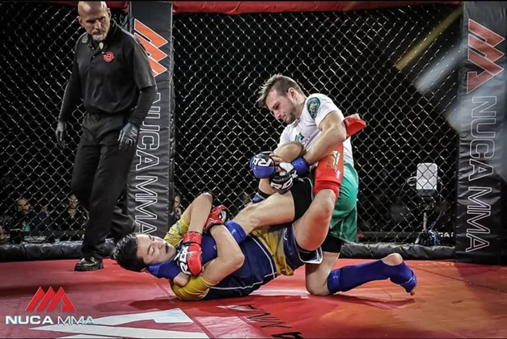
Grappling is essential in MMA because it can help you gain points and may ultimately mean the difference between winning and losing the match. There are many ways to grapple, and knowing the difference between these techniques and how to execute these techniques will help you succeed in MMA.
- Clinching is a technique used to defend your body against being taken down or overthrown. Not only does clinching help you defensively, but it also can help you get into a better physical position to strike a counterattack against your opponent.
- Escaping is another amazing move used when you want to get out of a hold your opponent has put you in, such as a headlock. Escaping is often used as a defensive move, but it can also be used offensively if you are able to put your opponent in a vulnerable position.
- Reversals involve moving from the submissive to the dominant position, giving you an advantage over your opponent.
- Submissions involve forcing your opponent into a submission hold. In this technique, you use your arms to hold the opponent’s neck of the opponent until they tap, showing submission. If they do not tap out, the official will end the fight.
- And finally, takedowns involve taking down your opponent in a standing position.
Understanding and utilizing grappling techniques can improve your chances of winning an MMA match. Learning all the different ways to grapple and perfecting your technique will help you become a force to be reckoned with in the MMA world.
Basic Strikes to Start Training For MMA
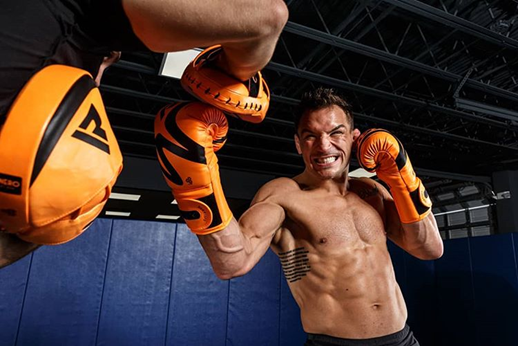
In mixed martial arts, different kinds of strikes are used to take down the opponent. Each type of strike has its own set of benefits and drawbacks, so it’s essential to know when and how to use each one
- Punches are quick and powerful, but they don’t have a lot of reach.
- Kicks are slower but have more range, making them ideal for keeping an opponent at a distance. Knees can be used at close range to inflict severe damage, but they’re harder to control than punches or kicks.
- Elbows are perhaps the most versatile type of strike, as they can be used in a variety of ways and at different ranges. However, they’re also the hardest to master. Ultimately, it’s up to the fighter to decide which type of strike is right for any given situation.
- A jab is a quick, straight punch that is thrown with the lead hand. It is often used to set up other, more powerful strikes.
- Another basic strike is the cross. Like the jab, the cross is thrown with the lead hand, but it crosses over the opponent’s body to land on the opposite side. The cross is a more powerful punch than the jab and can be used to knock an opponent out.
- A hook is another common strike used. A hook is thrown with the rear hand and hooks around the side of an opponent’s head. It can be used to surprise an opponent or to follow up on a jab or cross.
If you are not delivering blows, you will be dodging your opponent. This involves reading every move before he delivers it and planning your next move according to that.
Other than that, blocking the punches is another move you need, which involves taking your hand and covering your face when the opponent delivers a punch. It is essential to take a neutral position after that so that you can return a punch or strike.
Practice Sparring
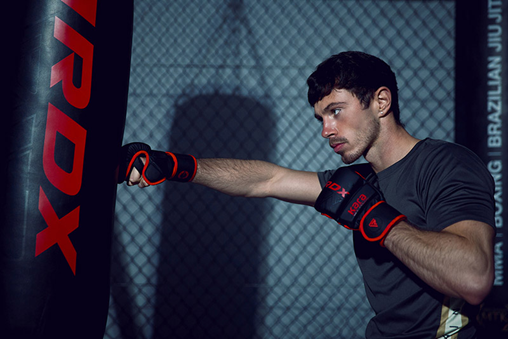
The best way to learn how to fight is by sparring. Sparring is a great way to practice fighting mechanics without worrying about an actual match. You can do sparring with a trainer or another student if you are in a class. Usually, in sparring, a match is simulated to give you a real-life feel for the time and conditions in which you will be competing.
However, note that sparring will not go as far as an actual match will go. For example, if you get put on a submission hold, the trainer or referee may immediately call time so that no one gets hurt. This keeps you safe and helps you learn your strengths and weaknesses before stepping inside the octagon for an official match. So, if you want to start getting better at fighting, find someone to spar with today.
Related Article: Why Are Personal Trainers Important for Healthy Living? Celebrate the Mentors in Your Life
What Equipment/Gear You Need for MMA Training
When it comes to mixed martial arts, there is a lot of equipment that you will need in order to be safe and prepared for a fight. Here is a list of the essential gear that you will need:
MMA Gloves
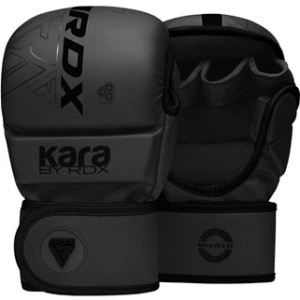
MMA gloves are an essential piece of equipment required for training. They help to protect the hands and fingers from impact and injury. MMA gloves also help to grip the opponent, making it easier to control them during a match. Many different types of MMA gloves are available on the market, so choosing the right pair for your training is vital.
Gloves come in different sizes, weights, and styles, so make sure to get the right size. If you are serious about training in MMA, you will need gloves that fit well and offer good protection. Take your time in choosing the right pair of gloves, as they will play an important role in your training.
Shin Guards
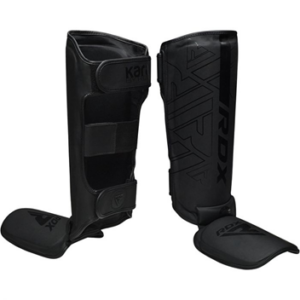
The shin guard protects the shins from impact and strikes during training. It is made of a thick, padded material that absorbs impact and prevents injury. Shin guards are available in different sizes and shapes to fit different leg sizes. They are usually held in place by straps or Velcro closures.
Some shin guards also have ankle support to prevent injury to the ankles during training. MMA fighters use shin guards to protect themselves from kicks and strikes during training and competition. Choose a shin guard that fits well and protects your shins.
If you wish to focus more precisely on uppercuts while training, then investing in MMA punch bags is the best option!
Head Guard
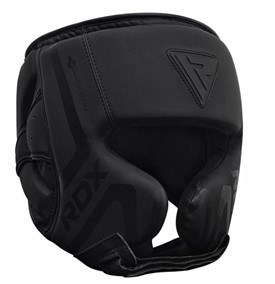
Any mixed martial arts fighter will tell you that headgear is an essential piece of equipment during training and in competition. A good head guard should provide adequate protection for the head and face while still allowing the fighter to move freely and see clearly. It should also be comfortable to wear so that the fighter can focus on their training without being distracted by discomfort.
There are many different types of head guards on the market, so choosing one that is right for you is important. Some factors to consider include the level of protection you need, the weight and balance of the headgear, and whether you prefer a full coverage or open-face design.
With so many options available, finding a head guard to help you train safely and perform your best in the ring is easy. There are many other types of coaching equipment , like chest guards, kick mitts, etc., that can further enhance your performance.
MMA Shorts

It is essential to have the right pair of shorts that would enable you to move freely and execute the techniques correctly. The material of the shorts should also be comfortable and breathable so that you would not feel restricted while wearing them.
Most importantly, the shorts should be able to withstand the rigors of training and provide adequate support and protection to your body. With the right pair of MMA shorts , you will be able to train effectively and perform at your best during competitions.
Chest Guard
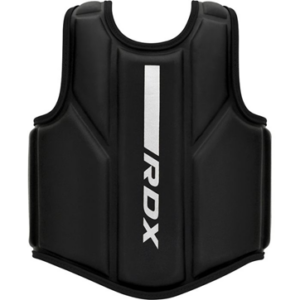
Chest guards provide essential protection against the head, neck, and facial injuries that can be sustained during MMA training and competition. Chest guards provide additional reinforcement to the body so that even if you don’t have huge biceps or lightning-fast reflexes, you won’t have to worry about taking too many hits.
And if your punch protection needs an upgrade, look no further than a chest guard. With strategically located shock absorbers made from top-quality materials, these guards can prevent serious internal damage and give your body the cushioning it needs to safely enter the fight. With a chest guard as protective gear in your arsenal, you can be sure that your safety will never be compromised.
Mouthguard

The mouthguard is a significant piece of equipment that protects your teeth and gums from impact, helps absorb shocks, and prevents concussions. In addition, a mouthguard can also help to improve your breathing and prevent you from swallowing your tongue in the event of a knockout.
While you may be tempted to skip this important gear, doing so could risk your health and safety. So next time you step into the ring, make sure you’re fully protected with a quality mouthguard.
Wrap Up!
Now that you know the basics of MMA training, you’re ready to take your martial arts training to the next level. You should keep a few things in mind as you start your journey into the world of MMA. First, focus on developing your technique. It’s important to have strong striking and grappling skills if you want to be successful in MMA.
Second, make sure you have a good game plan. Know what you want to do in each situation and have a plan for how to execute it. Third, be prepared to work hard. MMA is a physically demanding sport, so be prepared to put in the hours of training required to succeed. Finally, enjoy the process. Learning new techniques and becoming a better fighter can be incredibly rewarding. So, stick with it and enjoy the journey!

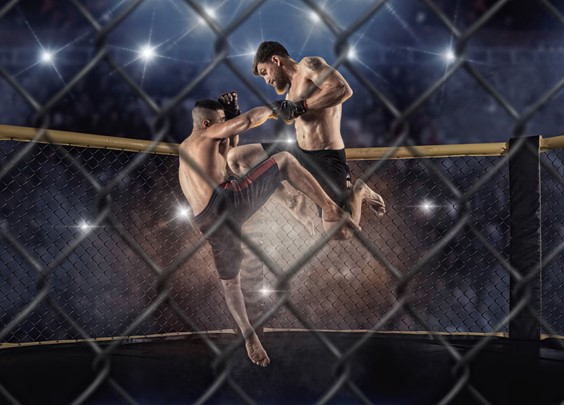




2 Comments
nice work, keep up the good work.
really appreciate your work.
Have you ever considered publishing an ebook or guest authoring on other websites? I have a blog based upon on the same information you discuss and would love to have you share some stories/information. I know my viewers would value your work. If you’re even remotely interested, feel free to send me an email.